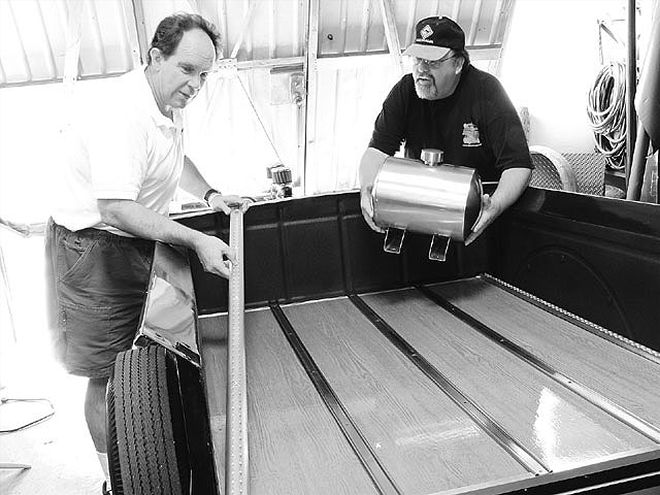

It's almost a given that if you build your own rides, whether at home or for a business, at some point in the process you run into a problem that requires you to back up a few steps to correct. This can be especially frustrating the closer your project is to completion. Nobody likes going back, but sometimes it's more than worth the extra work and loss of the ever important "motivation factor" than trying to live with it. This leads us to why and how this article was conceived.
For the past 100 years or so, SRM's esteemed technical editor, Ron Ceridono, has owned and rebuilt-more than a few times-the 1931 Ford Model A you see on this page. After trading a small-block Chevy engine for the late-year factory steel-roofed '31 Ford truck back in 1965, Ron built and rebuilt the truck, dropping in a hopped-up four-banger with two 97s atop a Zephyr manifold, then a small-block Chevy, then a turbo Buick V-6, and now with an early Flathead. You would think the little truck would be finished after all that work. Actually, while the truck ran in all its incarnations, it was never finished; some other project always got in the way.
Jumping to the present, Ron has recently neared the finish line for this '31's supposed final rebuild. Ron has managed to combine a unique collection of chassis and running gear parts that have transformed this truck into a true blue traditional hot rod (like the expertly built early Flathead engine that now graces the Model A's engine compartment, for example). Not that it hasn't always been a hot rod under the hood, but this time around the Model A has been treated to Ron's many years of experience of testing and installing just about every conceivable hot rod part known to man at least twice. So combine all that with the fact that this truck is like family to Ron and it's easy to understand why he wants the body of this truck to look a couple of notches better than just your average, everyday beater. Which brings up a good point. If you're building a beater, and you know and are OK with the fact that it's a beater, how far do you go with the build? Where do you stop building and call it done? Well, for Ron and his '31, the idea was to work the truck over just enough to make her look as presentable as possible using as much of the original body as possible.
While his truck will never be a "trailer queen," she deserves a nice cleanup. Just one glance at the truck in its present state and you can easily tell Ron has done a fine job of cleaning the truck up to a more-than-respectable state. However, there was one area of the truck Ron couldn't put out of his mind. The original bed (which, by the way, is unique to these late-year '31 trucks because it is slightly wider and longer) was in fair shape, with the only exceptions being two rather large areas of the bedsides that had been previously cut out, presumably for clearance issues, and your average truck bed lumps and bumps from years of use. Being that this truck is Ron's idea of a beater, the lumps and bumps didn't bother him nearly as much as the gaping holes in the bed. Besides, if the bed looked too good, he'd have to go back and make the hood, fenders, and cab straighter too! The goal here was to make the truck look like what it is-an old hot rod that isn't too nice to use.
Another area of the '31's bed that Ron had a few ideas on was the floor, or lack thereof. Over the years, it had been cut away to the point where little was left. Since this truck will be used as a truck, the bed floor will need to be stout enough to haul an engine or two once in while. As you will soon see, Ron's remedy will include a nice sheet of well-varnished oak plywood and an unseen steel tubing framework that ended up supporting the floor and straightening the bedsides all at once.
Finally, we address the issue of rust prevention-probably the most important part of going a few steps backward on this particular project. This issue recently became extremely important for the Model A, since it will soon be spending its golden years cruising in the tropical air of the Hawaiian Islands. Needless to say, Ron has wisely chosen to use the two-punch preventative/protective process by first using a rust neutralizing/heavy-duty, chip-resistant paint called Rust Bullet, topping it all off with a generous coating of Dupli-Color Truck Bed Coating. After all, better safe than sorry.